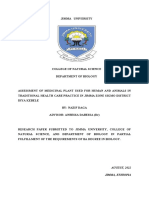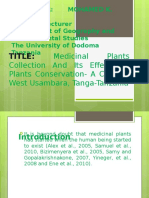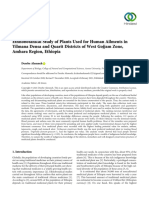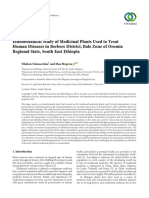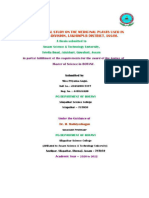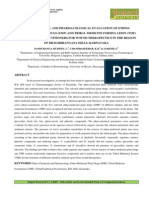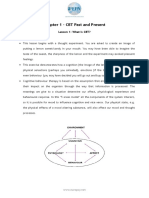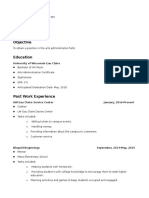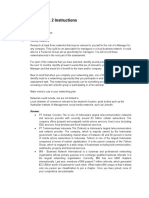0% found this document useful (0 votes)
5 views4 pagesPresentation Notes
The document assesses traditional medicinal plants used by the Tumiticha Kebele community in Southern Ethiopia, highlighting their significance in healthcare due to affordability and cultural relevance. Key findings include the identification of major plants like Adenium obesum and Aloe vera, health conditions treated, and socio-economic factors influencing their use. The study emphasizes the need for conservation efforts, documentation of indigenous knowledge, and integration of traditional medicine into national health systems.
Uploaded by
petroskifle225Copyright
© © All Rights Reserved
We take content rights seriously. If you suspect this is your content, claim it here.
Available Formats
Download as PDF, TXT or read online on Scribd
0% found this document useful (0 votes)
5 views4 pagesPresentation Notes
The document assesses traditional medicinal plants used by the Tumiticha Kebele community in Southern Ethiopia, highlighting their significance in healthcare due to affordability and cultural relevance. Key findings include the identification of major plants like Adenium obesum and Aloe vera, health conditions treated, and socio-economic factors influencing their use. The study emphasizes the need for conservation efforts, documentation of indigenous knowledge, and integration of traditional medicine into national health systems.
Uploaded by
petroskifle225Copyright
© © All Rights Reserved
We take content rights seriously. If you suspect this is your content, claim it here.
Available Formats
Download as PDF, TXT or read online on Scribd
/ 4

















